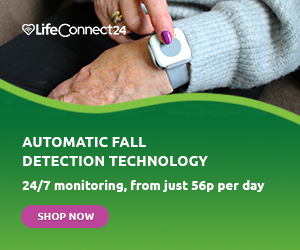This article was contributed by Angela Thomas
Many people experience heel pain. It can have several possible causes. In this article, we look at who is most likely to experience heel pain, as well as the possible causes and forms of prevention.
What is Heel Pain?
Heel pain is any severe pain underneath or behind the heel, or in the heel bone. Aside from excruciating pain, you may experience soreness or tenderness too. When you want to walk or place weight on the affected heel, you may experience intense pain in the heel and the ankle. Notably, this pain is often worse in the morning or when you become active after a rest. However, you can find relief through rest, stretching, joint pain treatments, or physiotherapy.
Who May Experience Heel Pain?
Specifically, heel pain is more common in active athletes who jog or run frequently and people aged 40-60. However, anyone can experience it regardless of age or gender. Research shows that close to 1 in 10 people experience heel pain sometimes.
Causes and Prevention of Heel Pain
There are several conditions that can cause pain in the heel, and there are also several ways to prevent it. The most common cause of heel pain is plantar fasciitis. Other causes include Achilles tendonitis, arthritis, bursitis, peripheral vascular disease, stress fractures, and inflamed tendons.
Here is a summary of some of the causes.
Plantar Fasciitis
This condition affects plantar fascia, a thick, flexible tissue under the sole of your foot. The plantar fascia muscle connects the toes to your heel bone. Plantar fasciitis occurs due to inflammation from micro-tears inside the plantar fascia. These thicken and cause severe pain. Plantar fasciitis pain is common among runners and obese people. Mostly, people experience stabbing and throbbing pains in the morning. The heel pains may subside as you move more.
The pain may return if you stand for a long time or if you stand and move after sitting for a long time. Sometimes, plantar fasciitis may spread to the surrounding tissue and heel bone, causing more pain.
Peripheral Vascular Disease
Generally, the peripheral vascular disorder makes blood vessels outside your heart block or narrow. If blood vessels around the heel get narrow, pain and fatigue may occur in your legs. As such, you will experience pain or cramps as you walk.
Achilles Tendonitis and Tendinosis/Tendonitis
Damage to collagen protein in the tendons may cause inflammation, swelling, and irritation of the Achilles tendon. This condition is called tendinosis/tendonitis or Achilles tendonitis. However, tendonitis may affect any tendon due to overuse or injury, while Achilles tendonitis only occurs in the heel tendon.
Arthritis
Sometimes, the ankle joint suffers wear and tear. This can lead to ankle arthritis in the ankle joint, which causes heel pain. Generally, arthritis causes pain and stiffness in many joints besides the ankle and usually worsens with age.
Bursitis
Bursae are small sacs filled with fluid that protect tendons, bones, and muscles near your joints. Inflammation of the bursae causes a painful condition termed bursitis. Repetitive overuse of the bursae or pressure on any part of your body, like kneeling, repetitive throws, or jumps, may cause inflammation of a bursa. If it affects your ankle or heel bursae, bursitis causes heel pain.
Stress Fractures
Repetitive stress or trauma on your foot may result in injury. This could include aching, swelling, or severe pain due to small cracks in the bone. Fatigue-induced bone fractures are common among athletes due to repeated stress on the heel. Fortunately, stress fractures can heal with rest, though may reoccur with renewed activity.
Bone Spurs
These are bony lumps or projections, known as osteophytes, that grow on bone edges of where bones meet each other. Sometimes, bone spurs can be painful and may prevent joint movement. Sometimes, bone spurs occur in the ankles, which can lead to pain in your heels.
Weakness Due to Inactivity
You may experience heel pain if you remain inactive for long periods. Consequently, the end of the calf muscles at the heels may get inflamed due to weakness. You may also experience pain in your heel if you start being active after long sedentary periods.
Sever’s Disease
Specifically, this condition affects children aged 8-15 years. Sever’s disease causes pain and soreness due to heightened physical activity in children.
Ways to Prevent Heel Pain
You can prevent and manage heel pain in several ways.
- Reduce Excess Body Weight – Being overweight exerts pressure on the leg joints and muscles. The heel carries the whole burden causing stress and pain. Check your diet and do regular exercise. Furthermore, follow joint pain protection tips.
- Stretch Regularly – Certainly, regular exercise and stretches condition your joints and muscles. As such, there are lower chances of joint and muscle stress, fracture, or tears.
- Wear Appropriate Footwear – Avoid high-heeled and ill-fitting shoes. Instead, wear well-fitting low-heeled shoes to support and protect your foot muscles and joints. Athletes should purchase proper running shoes to minimise the risk of injury.
- Use Massage Therapy and Painkillers – When heel pain strikes, you can use ice packs, massage the painful area, or take joint pain treatments and painkillers. However, take non-steroidal anti-inflammatory drugs with caution and consult your doctor.
- Use Natural Supplements – Nevertheless, before taking medications you may consider natural pain-relieving supplements. Natural or organic supplements may be less addictive and have few or no side effects. Reportedly, natural supplements like Heal N Soothe may reduce or help to manage heel pain. The herbal supplement contains anti-inflammatory properties that prevent soreness, swelling, pain, and inflammation in muscles and joints.
Conclusion
Pain in your heels can be a major obstacle to mobility. As it affects the foot, especially plantar fascia tissue, walking, standing, and running can all become painful. Fortunately, you can avoid this pain by following our prevention tips, and pain can be managed using medication and natural remedies.
Support from LifeConnect24
If you struggle with your mobility, a personal alarm from LifeConnect24 provides peace of mind around the home. If you experience a fall, help can be arranged at the press of a button. To find out more about the LifeConnect24 service, get in touch by calling us on 0800 999 0400. Visit our pricing page to buy your personal alarm today.



Leave A Comment